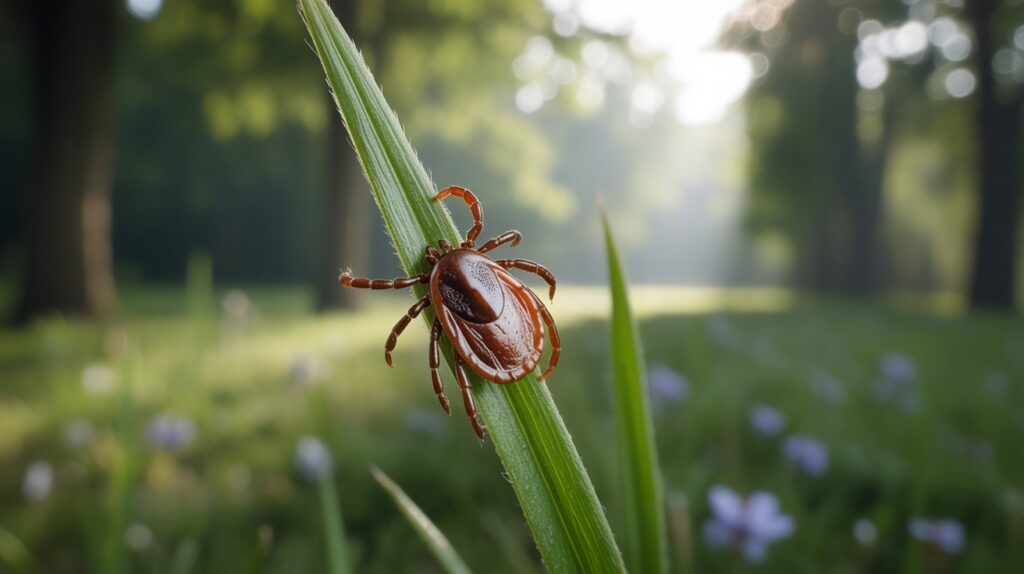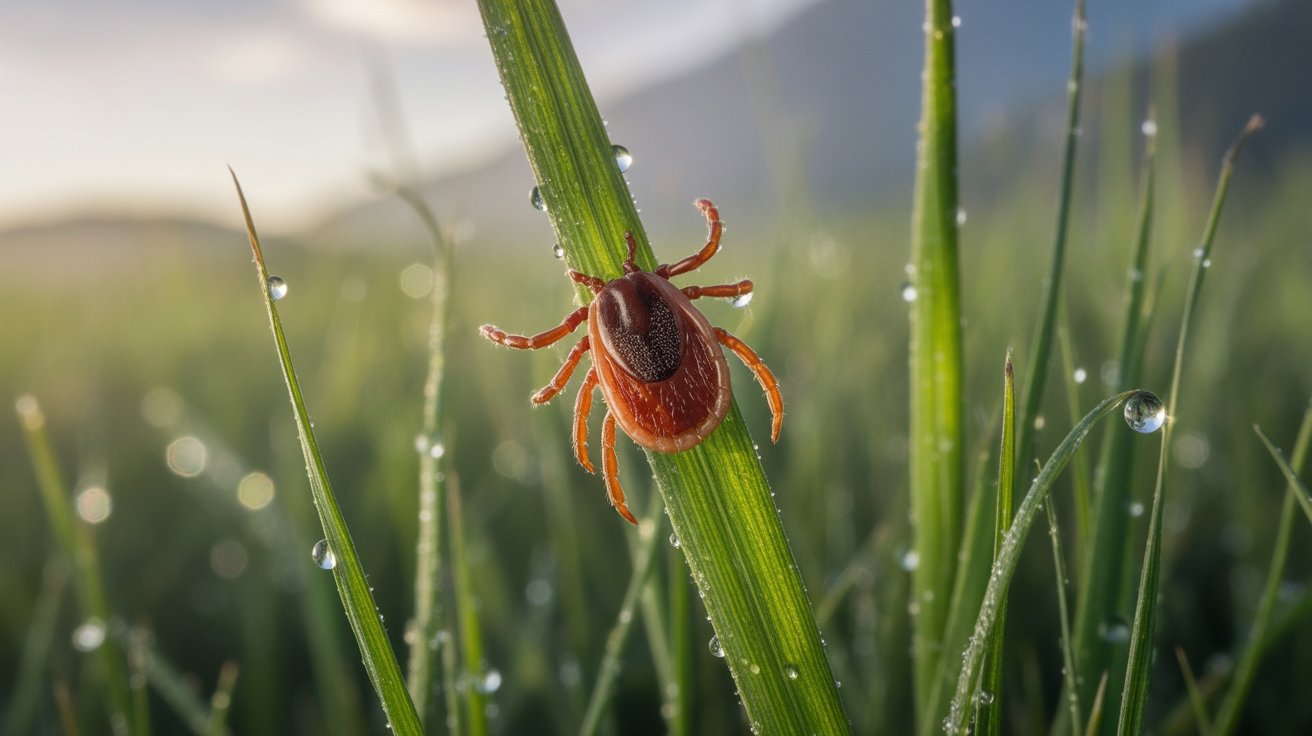Clear, practical, and country-aware advice for pet parents who want to keep dogs and cats parasite-free — with DIY tips, when to call the vet, and official resources.
Top 10 Parasites That Trouble Pets: Keeping pets healthy means preventing more than just bad diets and injuries — parasites are a leading cause of illness in dogs and cats worldwide. This guide walks you through the top 10 parasites you should know about in the United States and the United Kingdom, how they make pets sick, what prevention works, and realistic treatment steps you can take today.
(Short note for curious readers: while this guide focuses on parasites, parasite control ties into wider pet wellness — for example, controlling weight and exercise supports immune health. If you’re also interested in weight care, search our “Know About Pet Obesity and prevention” resources.)
Quick overview (the parasites covered)
- Fleas
- Ticks (and tick-borne disease)
- Heartworm (Dirofilaria)
- Roundworms (Toxocara, Toxascaris)
- Hookworms
- Tapeworms
- Giardia
- Coccidia
- Lungworm (Angiostrongylus vasorum — especially important in the UK)
- Mites (sarcoptic mange & ear mites)
Many of these are preventable with routine veterinary care and sensible home practices. For broad guidance on what species are most common and general prevention, see PDSA (UK) and CDC (US). (PDSA, CDC)
How to use this guide
- Read the parasite summaries (what to watch for).
- Follow the Prevention checklist under each parasite (practical, low-cost steps).
- Use the Treatment & Vet Steps to know what to do if you suspect infection.
- Finish with the step-by-step household parasite control plan.
1) Fleas
What they do: Skin irritation, allergic dermatitis, anemia (in heavy infestations), and they can transmit tapeworms if pets ingest infected fleas. Flea bites are often intensely itchy, and some animals develop flea-allergy dermatitis.
Signs to watch for: Constant scratching, hair loss, small black “flea dirt” specks, or visible fleas. Puppies and kittens can become anemic.
Prevention (US & UK): Regularly use a vet-recommended flea product (topical or oral) appropriate for your pet’s species and weight; vacuum bedding and carpets weekly, wash bedding in hot water; reduce yard flea habitat (tidy leaf piles). In the UK, vets and professional bodies increasingly recommend a risk-based approach to parasiticide use because of environmental concerns — discuss options with your vet. (PDSA, The Guardian, British Veterinary Association)
Treatment & Vet steps: Many effective spot-ons and oral products exist; for heavy infestations or allergic animals your vet may prescribe an insect growth regulator plus symptomatic treatment (steroids or antihistamines) and secondary infection care. Always use products labelled for the species (some dog products are toxic to cats).
2) Ticks (and tick-borne diseases)
What they do: Ticks attach and feed; they can transmit Lyme disease, ehrlichiosis, anaplasmosis and other infections. Tick bites can also cause local irritation and, rarely, paralysis (certain species).
Signs to watch for: Visible tick on skin, local swelling, fever, lameness, lethargy, or sudden loss of appetite days to weeks after a bite. For Lyme disease specifically, signs may include shifting leg lameness.
Prevention (US & UK): Use vet-recommended tick prevention (collars, topicals, oral), check your pet after outdoor time, avoid tall grass and leaf litter where feasible. For dogs in high-risk US regions check year-round prevention recommendations (heartworm/tick seasons vary by region). (CDC, American Veterinary Medical Association)
Treatment & Vet steps: If you find a tick, remove it carefully (tick removal tool or fine tweezers, pull straight out). If your pet develops fever, lameness or lethargy within weeks, call your vet for testing and likely antibiotic therapy.

3) Heartworm (Dirofilaria) — big risk in many US areas; emerging concerns elsewhere
What it does: Transmitted by mosquitoes, heartworms live in the heart and pulmonary arteries causing coughing, exercise intolerance, and eventually heart failure. Prevention is highly effective; untreated infections can be fatal.
Signs to watch for: Persistent cough, decreased stamina, weight loss, difficulty breathing. Dogs are the primary hosts; cats may show respiratory or neurological signs.
Prevention (US & travel notes): Heartworm prevention products (monthly chewables or topical) are routine in many US regions and are nearly 100% effective when used correctly — test dogs prior to starting or restarting prevention, and follow your vet’s testing schedule. New CAPC/AVMA forecasts show heartworm risk shifting regionally, so always follow local vet advice. (CDC, American Veterinary Medical Association)
UK note: Heartworm is less common in the UK but travel/imported animals can introduce risk — always advise your vet if you travel with your pet.
Treatment & Vet steps: Heartworm treatment is complex and sometimes risky; it requires veterinary diagnosis, imaging, and a staged treatment plan — don’t attempt home treatment. The American Heartworm Society provides detailed protocols. (American Heartworm Society)
4) Roundworms (Toxocara, etc.)
What they do: Common intestinal worms; can cause vomiting, diarrhea, poor growth in young animals, and pot-bellied appearance in puppies/kittens. Roundworm eggs can be zoonotic (Toxocara) — washing hands and cleaning feces promptly reduces human risk.
Signs to watch for: Visible spaghetti-like worms in stool or vomit, pot-belly, poor coat, diarrhea.
Prevention (US & UK): Routine deworming schedules for puppies/kittens and adult pets as advised by your vet; prompt feces removal; keep children away from contaminated soil (sandbox hygiene). AVMA and PDSA both list intestinal worms as common and preventable with regular worming. (American Veterinary Medical Association, PDSA)
Treatment & Vet steps: Deworming medications (pyrantel, fenbendazole, etc.) prescribed by a vet; follow repeat treatments to clear life stages.
5) Hookworms
What they do: Feed on intestinal blood causing anemia, especially dangerous in puppies and young animals; some species can penetrate human skin (cutaneous larva migrans).
Signs to watch for: Diarrhea (often bloody), pale gums, weakness, weight loss.
Prevention (US & UK): Routine deworming, prevent scavenging and hunting behavior, control fleas (some flea species can carry parasite stages), and maintain yard hygiene. (American Veterinary Medical Association)
Treatment & Vet steps: Deworming drugs and supportive care (fluids, blood transfusion in severe anemia) as needed.
6) Tapeworms
What they do: Usually acquired by swallowing infected fleas (Dipylidium) or by eating raw prey; tapeworm segments are visible near the pet’s anus or in bedding. They rarely cause severe disease but indicate flea exposure or hunting.
Signs to watch for: White rice-like segments in fur or stool, scooting of the rear.
Prevention (US & UK): Flea control is the key prevention for Dipylidium tapeworm. For rodents/prey-borne tapeworms, prevent hunting and supervise outdoor time. (American Veterinary Medical Association)
Treatment & Vet steps: Specific dewormers (praziquantel) given by your vet; also address concurrent flea infestations.

7) Giardia
What it does: Single-celled parasite that causes intestinal upset — soft stools, diarrhea, and sometimes weight loss. It can spread in kennels, dog parks and via contaminated water. Some strains are zoonotic.
Signs to watch for: Soft, foul-smelling diarrhea, occasional mucus, weight loss.
Prevention (US & UK): Avoid drinking from puddles/streams; disinfect kennels; isolate symptomatic animals; wash hands after handling feces. For multi-pet households or boarding facilities, maintain strict hygiene. (CDC)
Treatment & Vet steps: Metronidazole or fenbendazole often prescribed; re-test to confirm clearance. Environmental cleaning and drying reduce spread.
8) Coccidia
What it does: Intestinal protozoa (Isospora in dogs/cats) that mainly affect young or immunocompromised animals causing diarrhea, sometimes severe in pups and kittens.
Signs to watch for: Watery diarrhea, sometimes with blood, lethargy and poor weight gain in young animals.
Prevention (US & UK): Good sanitation, avoid crowded kennels, and prompt feces removal. Routine screening for young animals in shelters and breeding facilities is common. (American Veterinary Medical Association)
Treatment & Vet steps: Anticoccidial medication (sulfonamides or toltrazuril) and supportive care; follow vet dosing strictly.
9) Lungworm (Angiostrongylus vasorum) — especially important in the UK
What it does: A parasitic roundworm that can cause respiratory signs, bleeding disorders, neurological problems and death in dogs. It’s transmitted by slugs and snails (and sometimes frogs/snails on paws or in mouths), and foxes can act as reservoirs. It is a rising concern in the UK and parts of Europe. (PDSA, Whiskers Vets)
Signs to watch for: Coughing, difficulty breathing, unexplained bleeding, lethargy, collapse, seizures. Signs can be sudden and severe.
Prevention (UK focus): Avoiding snails/slugs exposure (don’t let dogs eat slugs/snails or lick them off paws), regular approved lungworm prevention (your vet will advise which products protect against this parasite), and keeping dead wildlife away from pets. ESCCAP and PDSA offer regional forecasts and prevention advice. (ESCCAP UK & Ireland, Companion Animal Parasite Council)
Treatment & Vet steps: Diagnosis often needs specialized tests; treatment can require prolonged anthelmintic therapy and supportive care — contact your vet urgently if you suspect lungworm.
10) Skin & ear mites (sarcoptic mange, Otodectes)
What they do: Mites cause severe itching, hair loss, crusting, and secondary skin infections. Sarcoptic mange (Sarcoptes scabiei var. canis) is highly contagious among dogs and can cause transient irritation in people. Ear mites (Otodectes cynotis) commonly make kittens and cats itch their ears and shake their heads.
Signs to watch for: Intense scratching, hair loss, flaking skin, crusts, head shaking or ear discharge.
Prevention (US & UK): Maintain good hygiene, quarantine new rescue/shelter animals until checked, and treat contact cases promptly. Routine parasite checks on new pets help catch mites early. (PDSA)
Treatment & Vet steps: Topical or systemic acaricides prescribed by your vet (e.g., selamectin, moxidectin), plus cleaning of bedding and environment. Treat all in-contact animals.
A realistic, step-by-step household parasite control plan (DIY + vet partnership)
- Register with a local vet & set reminders for flea/tick/heartworm prevention and worming (seasonal timing varies by region).
- Weekly quick checks: Run hands through your pet’s coat (feel for lumps, ticks, fleas), and check ears, eyes and rear. Do this after outdoor walks.
- Measure & track: Keep a simple log with dates of parasite meds, stool checks, and any unusual symptoms.
- Environmental cleaning: Vacuum and wash bedding weekly; remove feces from yard daily; dry carpets and bedding in sunlight when possible.
- Limit risky exposures: Don’t allow pets to drink from puddles, snatch slugs, or scavenge carcasses. Supervise hunting in cats where feasible.
- Control fleas promptly: Together with yard cleaning, treat all in-contact animals and follow vet instructions.
- When in doubt, call your vet: Quick testing and early treatment prevent complications and reduce spread.

When to call the vet — red flags
- Heavy diarrhea or persistent vomiting.
- Pale gums, severe weakness or collapse (anemia).
- Coughing, difficulty breathing, sudden bleeding, seizures.
- Visible parasites on animal and multiple animals affected in the household or boarding facility.
When a serious parasite (heartworm, lungworm) is suspected, don’t delay — those often need rapid, veterinary-only interventions. (CDC, PDSA)
Country-specific quick notes
- United States: Heartworm prevention is routine in many regions — ask your vet which product suits your area, and test before starting prevention if your pet is older or has lapsed doses. For region-specific parasite forecasts check CAPC/AVMA updates. (American Veterinary Medical Association, American Heartworm Society)
- United Kingdom: Lungworm is a major concern; discuss lungworm protection with your vet and adopt a risk-based approach to flea treatments to balance pet health and environmental stewardship (BVA/NOAH guidance). (PDSA, NOAH (National Office of Animal Health))
Helpful official resources (clickable)
- CDC — Healthy Pets pages & Parasitic Diseases A–Z. (US public health reference). (CDC)
https://www.cdc.gov/healthy-pets/
https://www.cdc.gov/parasites/listing/index.html - AVMA — Intestinal parasites & Heartworm disease (US pet owner guidance). (American Veterinary Medical Association)
https://www.avma.org/resources-tools/pet-owners/petcare/intestinal-parasites-cats-and-dogs
https://www.avma.org/resources-tools/pet-owners/petcare/heartworm-disease - PDSA — Parasites in dogs and cats (UK guidance). (PDSA)
https://www.pdsa.org.uk/pet-help-and-advice/pet-health-hub/conditions/parasites-in-dogs
https://www.pdsa.org.uk/pet-help-and-advice/pet-health-hub/conditions/lungworm-in-dogs - ESCCAP UK & Ireland — Parasite Forecast & professional guidance. (ESCCAP UK & Ireland)
https://www.esccapuk.org.uk/ - Heartworm Society / CAPC forecasts (USA) — for local heartworm risk and prevention recommendations. (American Heartworm Society, American Veterinary Medical Association)
Final checklist — 8 practical DIY steps you can start today
- Book an appointment with your vet for routine parasite plan (and ask about region-specific risks).
- Set calendar reminders for monthly flea/tick/heartworm meds and quarterly worming if advised.
- Check your pet after every walk for ticks/fleas and remove ticks correctly.
- Wash pet bedding weekly in hot water and vacuum carpets.
- Replace high-calorie treats with low-calorie, vet-approved options — fewer treats = fewer parasite exposures tied to scavenging.
- Keep children’s sandboxes covered and away from pet feces.
- Don’t let pets eat slugs/snails, puddles, or carcasses.
- If you adopt or travel with a pet, tell your vet — travel and rescue animals bring different parasite risks.
Disclaimer
This article is educational and not a substitute for professional veterinary care. If you suspect your pet has a parasite infection or is unwell, contact a licensed veterinarian immediately. Follow your vet’s instructions for diagnosis and treatment. Official links above are current as of the time of writing; check your local veterinary authority for the latest regional advice. (PDSA, CDC)
